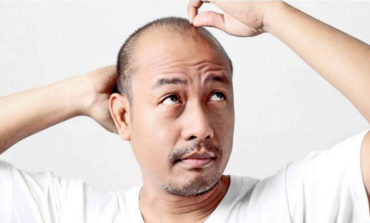How to Deal with Androgenic Alopecia (AGA)
The abbreviation AGA stands for androgenic alopecia. AGA is actually the most widely spread culprit for hair loss. Over 90% of hair loss cases are associated with androgens. 50% of males and 40% of females suffer from hair loss before they reach 50 years old. The severity differs from one person to another. Many factors contribute to AGA causes. The common one is heredity. Though, specialists see more cases of hair loss with no family history. Testosterone is turned into dihydrotestosterone (DHT) by the special enzyme. And DHT affects hair follicles.

Symptoms
The process can affect the hair growth from the follicles. As a result, typical hair loss occurs. To put it straight, the miniaturization defines AGA and also makes hair loss more noticeable. With seasonal hair shedding provoked by such conditions as telogen effluvium which do not comprise miniaturization, the hair loss will be replaced by the new hair. Normal hair generally replaces the hair to avoid the loss in coverage or volume.
In the case of androgenic alopecia, generally, the hair gets back in finer, thinner and with cotton candy hair texture. In some time, you might find that there are fewer hair strands. The thing is that the amount you have is already compromised and finer. It means the coverage and volume are seriously damaged. This significantly affects the way your hair looks. Over numerous cycles, your hair becomes finer every time till you get peach fuzz or balding and then nothing.
This is different in women. Men will typically have balding spots or thinning on the head top and in the temples. First, it is thinning then a small balding spot may appear which can get bigger in some time. Women will have diffuse hair thinning and volume loss. Also, a widening in the party line may be possible. In specific zones in women, you can notice hair loss in the temples, at the crown and at the bang line. This depends on the person and the genetics.
Treatment
There are different ways of treating AGA. Some individuals use medications to control androgens. Success in such cases varies. What important here is that there is no feasible method for removing all DHT or stopping the process. So, remember you have to deal with a constantly moving target. This is generally not that one has high levels of DHT, testosterone, or something else, but it is that one is sensitive to what he or she has. People often tell such things “my testosterone levels are low, they are not high. Why did this happen to me?” This is not normally the level you try to control; this is the issue of sensitivity.
Addressing inflammation, sensitivity and regrowth is a plan that is much better. It is realistic and is aimed to control what people are actually able to control. Regrowth is an essential equation part. To achieve decent results, you should effectively regrow and then keep what was lost.





